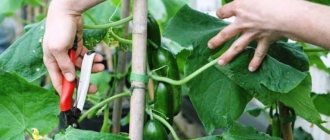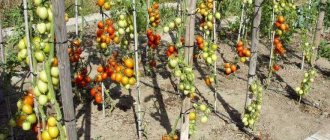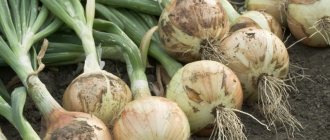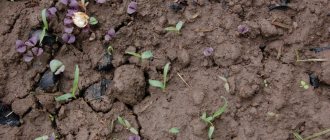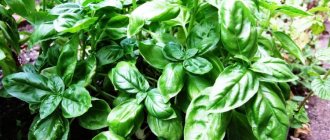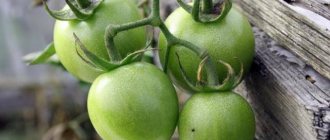A way to increase the yield of cucumbers in a greenhouse
Pruning is an important step in growing cucumbers. Proper implementation of this process helps not only to increase the yield of this crop, but also to improve its quality. Pruning helps reduce the vegetative mass of the plant, which requires a large amount of water and nutrients to feed it, and directs all the possibilities for better development of the fruits. The plant variety, growing and harvesting time affect the choice of pruning method.
For even and better growth, cucumbers are usually tied to trellises.
General rules for plant formation
In the greenhouse at your summer cottage you can find different varieties of cucumbers. To get the highest possible yield, the plant must be shaped, reduce the growth of vines and leaves, and help it direct maximum forces to the formation of fruits. The method of pollination of the variety must be taken into account in the formation system.
Parthenocarpic, that is, self-pollinating, hybrid varieties must be grown in one stem. It is on it that the third part of the harvest is laid. The rest is formed on the side shoots. To make pruning easy, you need to divide the cucumber vines into about four zones. First of all, at the bottom of the stem, you need to remove all the flower primordia and lateral shoots in the axils from the second to fourth leaves. The leaves remain. This measure is necessary to ensure that the lower part of the stem has good ventilation. This will help protect the plant in the greenhouse from root rot. It will be able to direct all its forces to the development of the fruiting zone. If the side vines are not removed, then all the nutrition will go to their growth and real thickets will form in the greenhouse.
Then you need to move to the second zone, which covers the next three to four nodes or up to a lash height of one m. On the side shoots in this zone you need to leave one cucumber and one or two leaves, remove the growth point.
Scheme of vertical cultivation of cucumbers.
The third zone on the main stem is the height of the plant from 1 to 1.5 m. In three or four nodes you should leave two fruits and two leaves. At the very top of the stem, in the fourth zone, leave three cucumbers and three leaves.
When the main stem grows to the wire, wrap it around it twice and remove the growing point after the fourth leaf. Then tie the whip with twine to the trellis. The first shoot that grows from the axil of the first leaf is removed. Three shoots that will grow later remain, they must be distributed along the wire. It’s better to do this in a checkerboard pattern: throw one to the right and two to the left. This distribution will maximize the illumination of the entire plant.
As the lashes grow, they need to be pinched every half meter. The new shoot remains as a continuation of the whip. When mass fruiting begins, you need to pinch off all the shoots that extend beyond the border of the row, not paying attention to the ovary and leaves. Their growth needs to be directed downward, into the depth of the row.
One of the important rules
Scheme for pruning cucumbers.
The top of a growing shoot should be well lit. When a lash of cucumbers grows to the top of the support, it is strictly forbidden to direct it along the trellis in a horizontal plane. This will lead to the formation of a kind of tent in the greenhouse, which, in turn, will greatly reduce the illumination and reduce the yield.
A lash thrown over a trellis and directed downward will still tend to grow upward. It must be controlled and directed downward once a week, hooking it onto the plant.
Cucumber varieties that have small fruits and are pollinated by bees should be formed into one stem. The main stem is pinched as soon as it reaches the top of the trellis. The three or four lower nodes must be completely blinded, and all shoots must be pinched over the second or third leaf.
Practical advice
Pruning the side shoots of a cucumber plant should not be delayed. In order not to injure the plant, it is necessary to remove only the growing point, and not the entire lash. Trimming is done with sharp scissors. Under no circumstances should you break it out. Otherwise, wounds will form on the plant, which will take a very long time to heal.
If there are many shoots on a cucumber bush with only barren flowers, you should not rush to cut them out. It is necessary to dry the soil in the greenhouse, reduce nitrogen nutrition and trim the growing point on the shoots. After these procedures, all the nutrients from the shoots will “go” into the fruit.
During harvesting, the position of the upper vines must not be changed. Otherwise, the plant will stop growing, begin to turn yellow, and the number of cucumbers will greatly decrease.
Every few days it is necessary to remove yellowed leaves and those growing below the fruiting zone. You only need to leave two or three sheets before it.
Lightening pruning of cucumbers
If the growth of plants in the greenhouse has slowed down, it is necessary to carry out lightening pruning. All leaves and side stems that hang down are trimmed. It is necessary to leave one at a time, or at least two fruit sets. If the harvest is uneven, the ovary should be left in no more than four to six nodes on the main stem. Then carry out lightening pruning.
To increase the yield, do not cut off the side stems that grow from the first nodes. The side shoots should be spread out in a fan pattern on the garden bed, freely. With this method, the main stem practically does not grow, but the yield increases greatly. This method is often used in a greenhouse; it promotes plant growth. But do not forget about the vegetative mass of the bush and periodically carry out lightening pruning.
Each variety of cucumber has its own pruning characteristics, which may differ from the general rules. It is very important to take this into account. To grow tasty and healthy fruits, pruning cucumbers is essential.
ParnikiTeplicy.ru
Why is the procedure needed?
The technical technique improves the yield and quality of vegetables. A kind of management practice that helps control the uncontrolled growth of a plant. Removing damaged leaves or excess shoots helps ensure adequate nutrition to allow vigorous fruit production. Eliminating unnecessary elements minimizes shading and maximizes sunlight penetration, which increases photosynthesis, improving crop yields. This eliminates the possibility of pests that cause disease in poorly ventilated bushes.
Cucumbers are very susceptible to diseases, which requires special control over the plants. By avoiding the appearance of excessive foliage, it is easy to monitor the development of cucumbers. However, plucking should be avoided, which could potentially reduce yield. Finally, moderate pruning will allow for easy harvesting.
Important! Over time, the lashes become thin and tangled, so do not delay pruning.
Tip 1: How to pinch cucumbers
To obtain a plentiful, early and friendly harvest, cucumbers correctly. To make them convenient to form and harvest without damaging the vines, you need to the cucumbers to a trellis.
You will need
- -trellis
- -leg-split
- -scissors
Instructions
- Tie the vines to the trellis as soon as they begin to branch and bend. You need to tie it under the cotyledon leaves and not tightly, taking into account the growth and development of the plant.
- Cucumbers be shaped depending on the variety. For example, hybrid varieties do not need to be formed at all if they are planted early and will bear fruit in a greenhouse. This variety will have ovaries and fruits on all vines. The main thing is that there is enough time and there is no strong shading due to the fact that the plants are thickened. Therefore, hybrid cucumbers should be planted very rarely, although this rule must be observed when planting any variety of cucumbers, since if the planting is done densely, then even on the most fertile soil there will be a meager harvest.
- If hybrid cucumbers are planted in open ground and not very early, then in order for all the ovaries to form and ripen, the vines must be formed.
- To form lashes, cut off the tops above the 6th leaf and leave 3 shoots in the plant. All other shoots that form must be removed. Also, regardless of the planting location, it is necessary to remove the tops above the 6th leaf on all shoots and promptly trim off twisted lashes and yellowing leaves.
- To form ordinary cucumbers, which do not have self-pollination and are pollinated by insects, it is necessary to form a plant with one, maximum two stems.
- Leave 4 growth zones on the stems and remove the top. All forming shoots, except the main stem, should be cut off. If you form cucumbers into two stems, then cut off the emerging shoots, leaving two main ones.
- In growing areas, leave only those growing points from which you plan to harvest. Trim off all other growing points. When forming, leave all the leaves, otherwise the ovaries will not have enough nutrients.
- If weak and twisted lashes form, they also need to be removed.
- By forming cucumbers correctly, the harvest will be earlier and more abundant.
- KakProsto.ru
conclusions
Now you know whether it is necessary to remove leaves from cucumbers and how to do it correctly. Shaping cucumber vines by pruning helps fight disease and increases yield. The plants are well ventilated, the sun's rays evenly illuminate the leaves and fruits, and insects can easily pollinate the inflorescences.
You also learned how to remove leaves from cucumbers so as not to damage the ovaries or break the vines. By removing the male inflorescences, you will direct the plant’s energy to the growth and ripening of fruits. Carry out pruning carefully using our recommendations and advice.
CUCUMBERS (PART-2) How to CORRECTLY REMOVE stepsons, form lashes and achieve BIG YIELDS
Is it necessary to cut off the mustache of cucumbers for a better harvest?
The stems of cucurbits such as cucumbers, squash and pumpkins cannot stand upright on their own.
No wonder they are called whips.
They spread (weave) along the ground or require support to grow upward. They need whiskers to attach to the support.
Is it necessary to cut off the mustache of cucumbers for a better harvest?
We answer: the absence or presence of mustaches does not in any way affect the size of the harvest.
However, any breakage of tissue, such as the mustache of cucumbers, is a threat to the health of the plant (infection can penetrate through the wounds).
Therefore, it is undesirable to pick off the mustache of cucumbers in open ground, especially in wet weather.
If cucumbers, zucchini or pumpkins are planted on a compost heap or high bed, there is no need to do this.
So is it necessary to cut off the mustache of cucumbers for a better harvest?
In some cases it is necessary, for example in greenhouses, but only for one purpose: to make it more convenient to care for plants and collect greens.
And so that the cucumbers do not get sick when removing the tendrils, as well as leaves that shade the rows or have already been used up, do not forget to disinfect the wounds by sprinkling crushed charcoal at the breakage points.
It is also advisable to wash your hands before each pinching, trimming or gartering procedure.
To prevent cucumber vines from interfering with each other, from clinging with their tendrils, do not thicken the plantings.
You can grow weakly branching cucumbers with a small number of tendrils or almost without them, for example, hybrids Amur, First Class, Regina.
The stems of zucchini are more delicate than those of cucumber, and they are severely damaged when tied, so you should not use varieties with climbing forms in the greenhouse.
It is better to grow bushy, compact and small-leafed plants.
Galimax for you
from here
Advantages and Disadvantages of Leaf Trimming
Benefits of pruning:
- the beds are ventilated from all sides;
- sunlight penetrates all parts of the vine;
- bees will be able to pollinate more inflorescences;
- plants are less susceptible to root rot;
- Cucumbers bear fruit longer.
There are practically no disadvantages in pruning leaves, provided that crop care technologies are followed.
Important! Excessive pruning of leaves in hot weather can harm the plant. Direct rays of the sun negatively affect fruiting.
Technique 6. Mulch or hill up cucumbers
If you place a layer of mulch around the plant, you can double the fruiting rate. Mulching helps retain moisture in the soil, protects it from temperature changes, and helps saturate the soil with oxygen. A bed on which a layer of mulch is laid looks more aesthetically pleasing: the fruits do not come into contact with the ground and remain intact longer. Another benefit of mulching is that you won't have to deal with weeds because there won't be any in the garden.
Mulch can be sawdust, straw, peat and other materials. The exception is green manure. The thing is that they can rot and thus attract pests. There is a high risk of developing pathogenic microorganisms.
As a rule, a layer of mulch is laid after planting seedlings in open soil. It is possible to carry out such a procedure in July. Make sure that the mulch does not come into contact with the cucumber stems.
If it is not possible to pay attention to mulching, be sure to carry out hilling, which also helps retain moisture in the soil and strengthen the roots. After fertilizing, the roots will grow quite large, so you will need to cover them with soil so that the bush can withstand the wind. In July, such manipulations are carried out 1-2 times.
